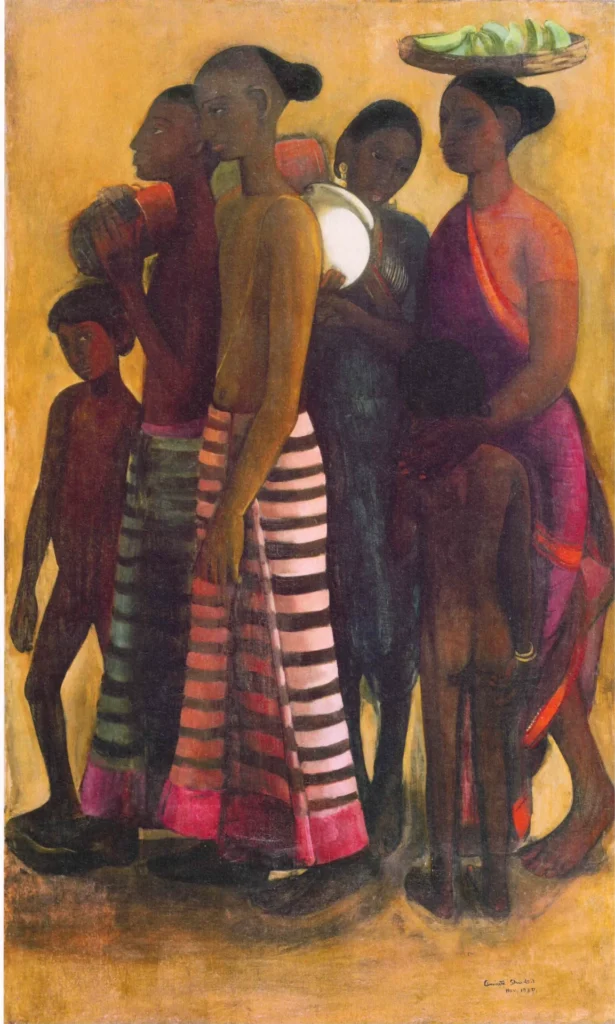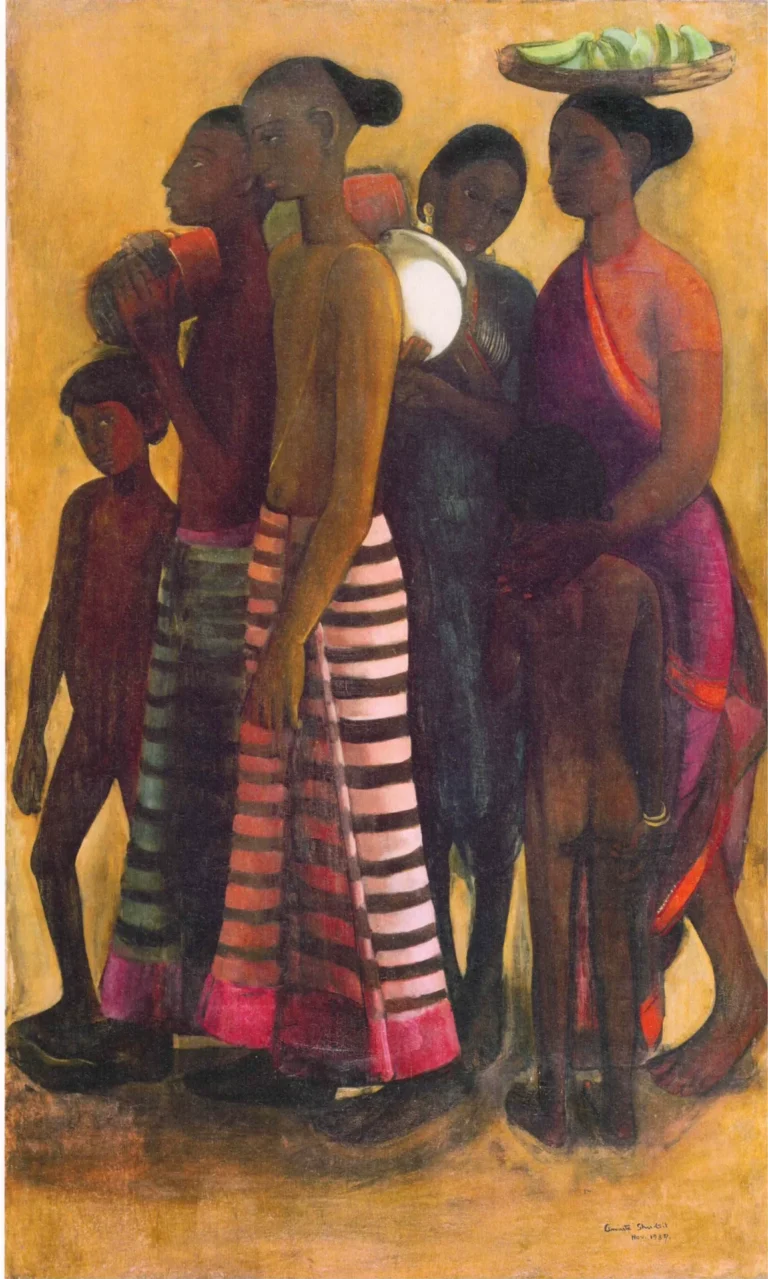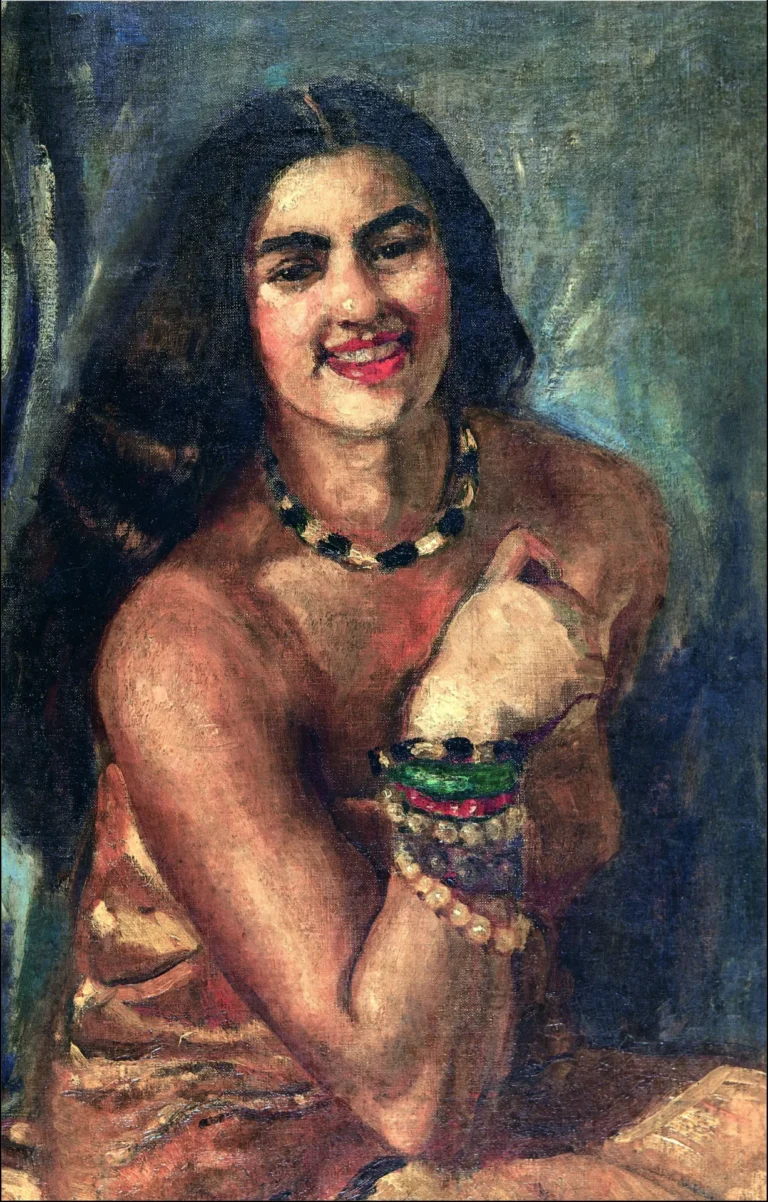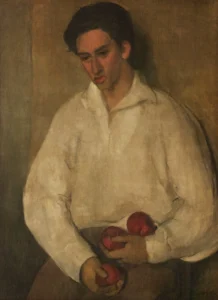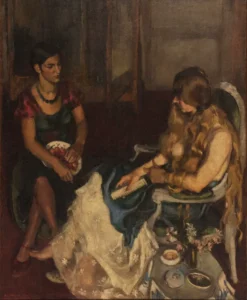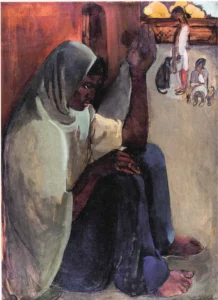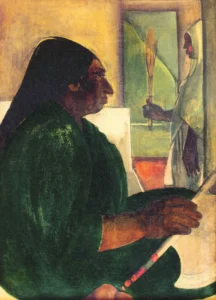South Indian Villagers Going to Market (1937)
Amrita Sher-Gil's South Indian Villagers Going to Market captures a lively scene of villagers en route to the market, showcasing their daily activities. Created in 1937, the painting reflects Sher-Gil's deep connection to South India's rural life, stemming from her inspiring visit to the Ajanta caves. The artwork’s dynamic composition, characterized by bold colors and expressive brushwork, embodies the essence of the cultural vibrancy of South Indian society, marking it as one of her significant contributions to the post-impressionist movement.
1937
About the Artwork
The story behind South Indian Villagers Going to Market is tied to Amrita Sher-Gil's immersive experience in South India during her visit to the Ajanta caves in 1936-37. Inspired by the cave paintings, she sought to depict the beauty of everyday life in this region. The painting resonates with movement and life, portraying the essence of the villagers' journey with a sense of authenticity. It reflects her deep appreciation for the culture, highlighting her talent to interpret and transform everyday scenes into vibrant works of art. Sher-Gil's multicultural background influenced her unique perspective on rural life, allowing her to bridge Western and Indian artistic traditions.
Did You Know
Amrita Sher-Gil is often referred to as one of the pioneers of modern Indian art, influencing many artists with her unique style and perspective that blended Eastern and Western artistic traditions.
Sher-Gil’s multicultural upbringing, having a Hungarian mother and an Indian father, provided her with a diverse viewpoint, which was reflected in her artwork that often explored themes of identity and cultural intertwining.
Despite her untimely death at the age of 28, Sher-Gil’s artwork has had a profound and lasting impact on Indian art, inspiring future generations of artists to explore their cultural heritage and personal narratives.




